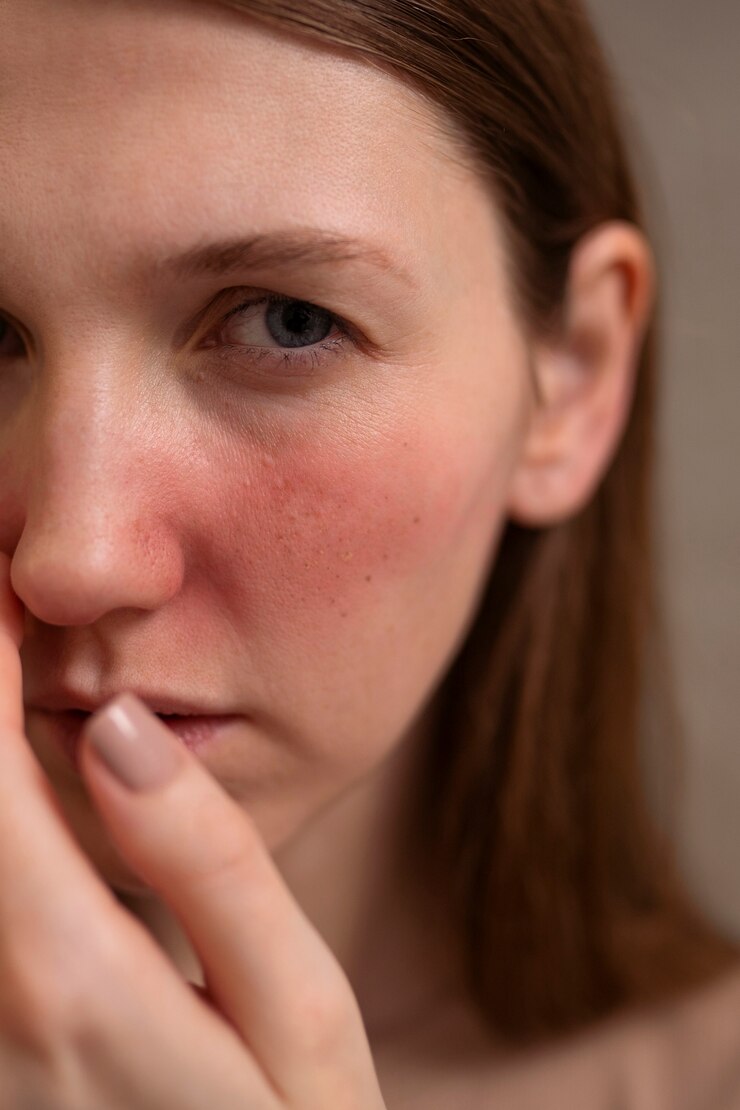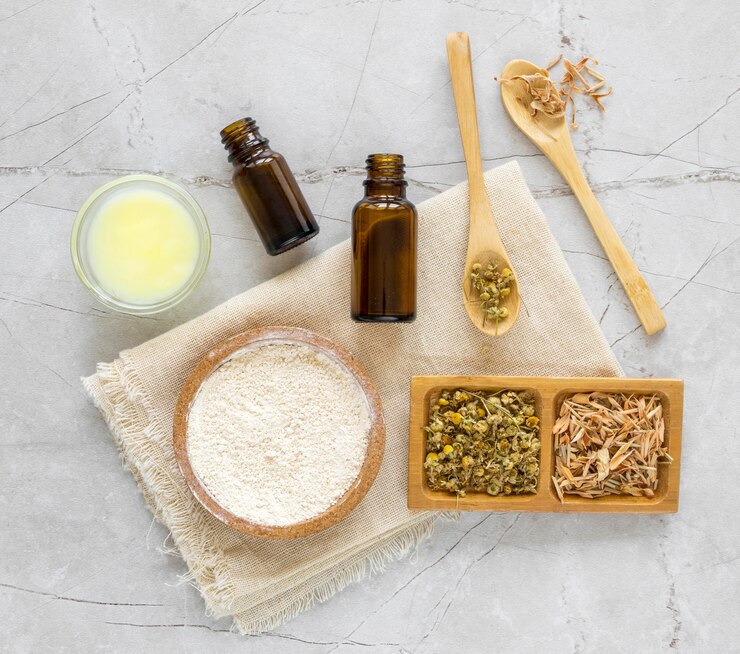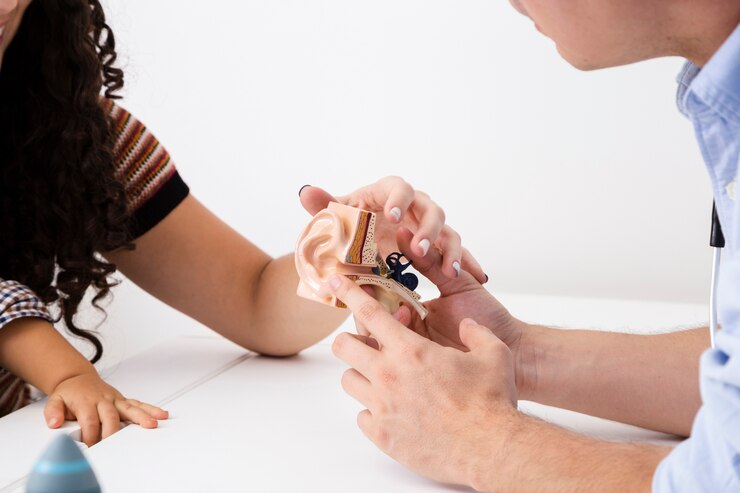
I hope you found my previous post helpful in identifying foods to avoid if you’re dealing with rosacea. Remember, everyone’s triggers can be different, so what affects me might be different for you. In my case, gluten, dairy, alcohol, and high-histamine foods tend to worsen my rosacea. You might discover other foods are problematic for you.
I’ve written a lot about rosacea on Joyous Health, so feel free to explore my other posts. While there’s no cure for rosacea, similar to eczema, making small changes to reduce inflammation in your body can improve your skin and overall health. I can confidently say that without my healthy habits, my rosacea would be much more severe.
In today’s post, I’ll share the top foods to incorporate into your diet to help manage your rosacea. There are many nourishing options that can benefit those with rosacea! Please note: If high-histamine foods trigger your rosacea, some options might not be suitable for you. We all have unique reactions and triggers.
**What to Eat If You Have Rosacea**
**Healthy Fats:** Consuming foods rich in healthy fats, particularly omega-3 fatty acids, can help reduce inflammation in the gut. These fats also play a role in stress management and hormone production. Some great sources of omega-3s include salmon, mackerel, flaxseed, chia seeds, hemp hearts, and walnuts.
– Baked Salmon with Kale Lemon Pesto
– Blueberry Flax Oat Bran Muffins
– The Best Paleo Vegan Meatballs
**Turmeric:** Known for its many benefits, turmeric promotes liver detoxification, supports detox, and is packed with antioxidants. Curcumin, the active ingredient, is highly anti-inflammatory and may help calm rosacea symptoms.
– Super Easy Turmeric Ginger Tea
– Nourishing Turmeric Golden Soup
**Leafy Greens:** Greens like kale, arugula, spinach, and bok choy are rich in anti-inflammatory compounds and antioxidants, which reduce oxidative stress and sun damage. They’re also full of vitamins and minerals that aid in skin cell regeneration, particularly their carotenoids that combat sun exposure.
– Juicy & Crunchy Kale Salad
– Peach Arugula Salad
**Cruciferous Vegetables:** This group includes kale, cabbage, Brussels sprouts, cauliflower, and broccoli. They’re rich in phytonutrients such as glucosinolates, lycopene, resveratrol, and carotenoids which are anti-inflammatory and protective against sun damage. Cruciferous veggies also aid detoxification with liver-loving compounds like indole-3-carbinol.
– Broccoli and Cranberry Salad with Creamy Dill Dressing
– Creamy & Dreamy Kale Salad
– Cauliflower Hummus
**Green Tea:** Green tea, especially our Radiance Tea, has polyphenols that serve as antioxidants. Epigallocatechin gallate found in green tea is known to rejuvenate old skin cells, keeping skin youthful and reducing inflammation.
– Matcha Collagen Latte
**Prebiotic Rich Foods:** There’s a strong connection between skin issues like rosacea and gut health. Prebiotic foods, which nourish good bacteria in our microbiome, are important for managing rosacea. Prebiotics include:
– Onions
– Garlic
– Bananas
– Artichokes
– Asparagus
– Whole Grains
– Beans
– Chocolate Chip Banana Bread
– Roasted Lemon Asparagus with Pecans
– Perfect Picnic Sandwiches
I hope this list inspires you to stock your kitchen with skin-soothing and nourishing foods. It’s all about balance — enjoying a glass of wine or a slice of chocolate cake occasionally is perfectly okay. Remember, the goal is progress, not perfection.
I’ll soon share recommendations on supplements and lifestyle changes that can greatly impact rosacea, from stress management to improving sleep habits. Before concluding this rosacea discussion, I will also touch on facial products, red light therapy, and facial acupuncture that have worked wonders for me.
I hope you find this information helpful.
Thank you for your lovely feedback, Jayne! Your support means a lot to me.
**Responses to Reader Questions:**
Thank you for your input. It’s common to find conflicting advice about rosacea diets because everyone’s triggers are unique. If you’re sensitive to high-histamine foods, avoiding them might be necessary. Otherwise, foods like walnuts can be beneficial for skin health.
To figure out your specific triggers, try eliminating high-histamine foods for a couple of weeks and then slowly reintroducing them to see if any cause a reaction. Regarding grains, oats and quinoa are often okay, especially when properly prepared.
It’s frustrating finding consistent advice, but try starting by eliminating refined sugar, dairy, gluten, processed, and fried foods. If you’ve done that without relief, consider a month on a low-histamine diet to see if it impacts your skin. Tomatoes and citrus are common allergens, but they might be fine for you.
Beginning slowly and tracking reactions to each food can help identify triggers without overwhelming you. If you’d like more information, follow me on TikTok where I share tips dedicated to rosacea.
Thank you again for your support, and take comfort knowing that you can experiment and find what works best for you.


